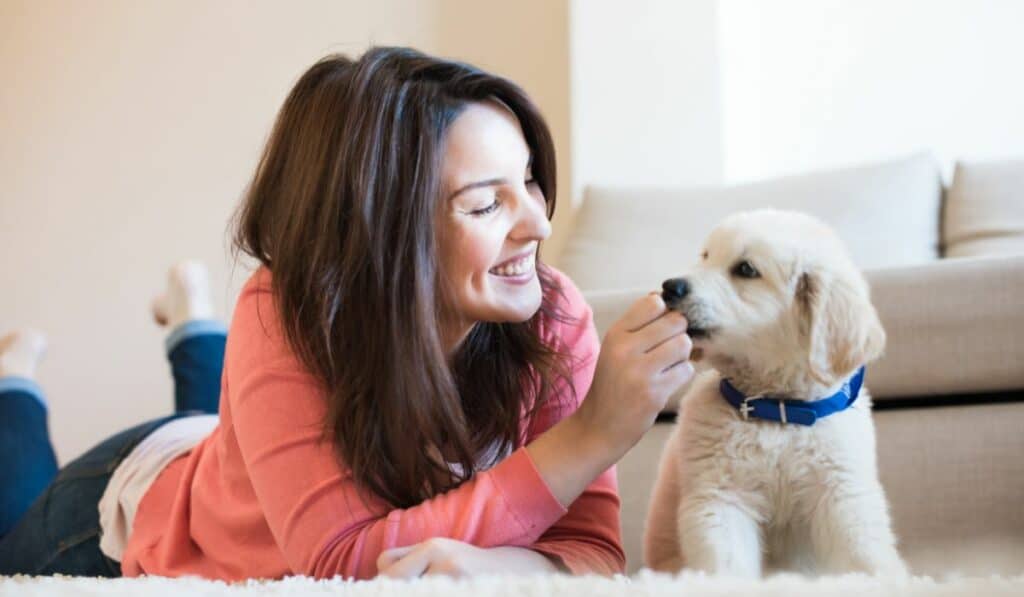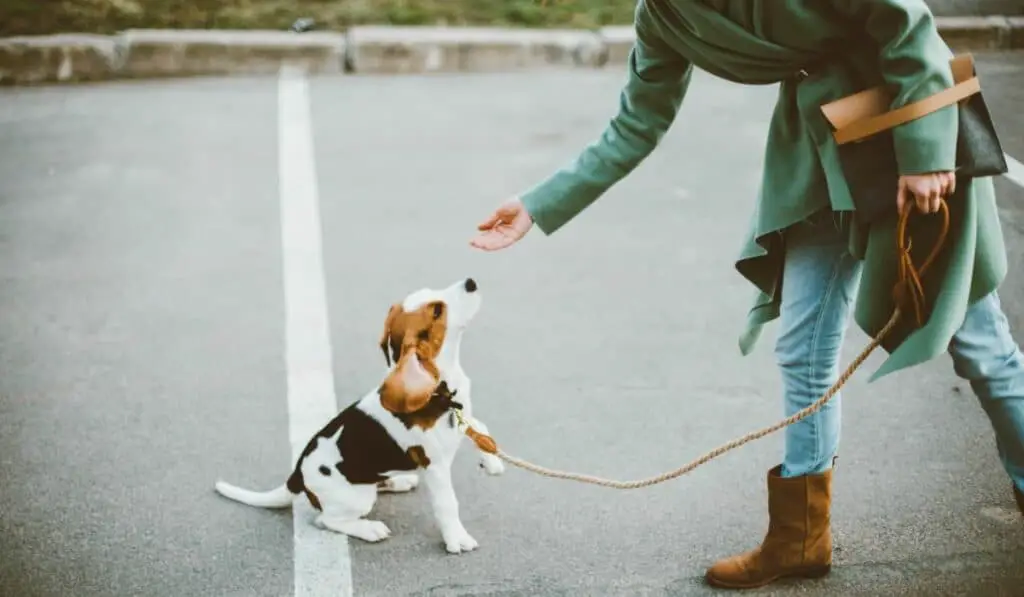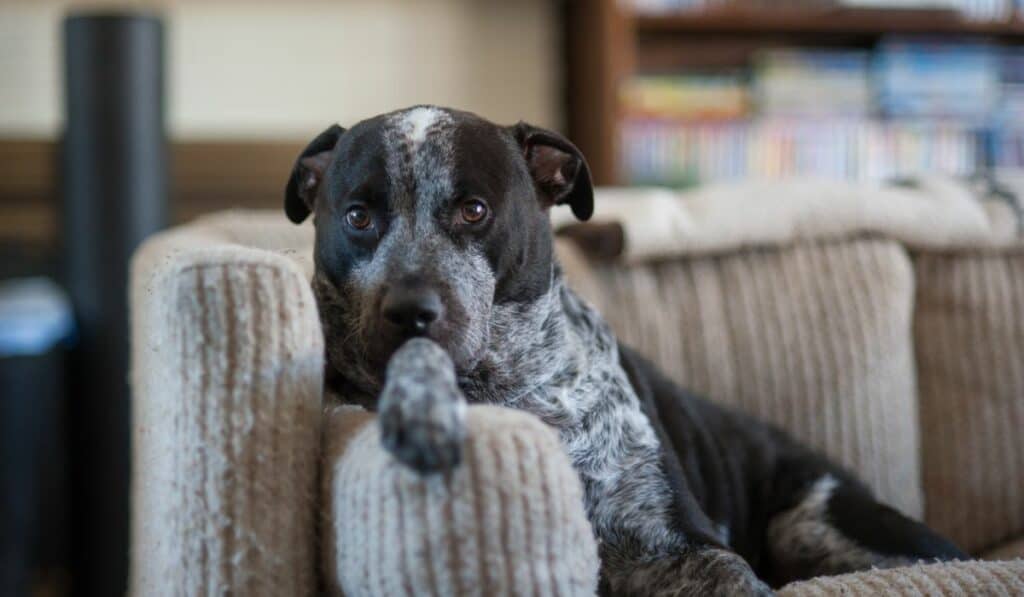Welcoming a new dog is an exciting and rewarding experience. However, it also comes with a significant amount of responsibility and can be overwhelming, especially for first-time pet parents. Fortunately, a well-prepared home and a thoughtful checklist can make this transition smoother for you and your little bundle of joy.
In this guide, we’ll walk you through a checklist for new dog owners, divided into three crucial phases: Pre-Arrival, During Arrival, and Post-Arrival that facilitate a smooth and stress-free transition. After all, our goal is to make sure you have all the essentials to set your pup up for a happy and healthy life.
Puppy Essentials: Checklist For New Dog Owners
Pre-Arrival
1. Research and Preparation
Before bringing a new dog home, it’s crucial to thoroughly research the breed you plan to get. Understanding their specific needs, temperament, and potential health risks helps you know what to expect and better prepare. This knowledge enables you to provide the appropriate care and environment for your pup, ensuring a seamless transition and a happy, healthy life.
Next, find a reputable veterinarian in your area. Schedule an initial check-up soon after your pup arrives. It’s also advisable to check out emergency veterinary services in case of urgent health issues. Additionally, consider getting pet insurance to manage potential veterinary costs, as medical care for pets can be expensive.
2. Preparing The Home
Getting your home prepared is a crucial step in ensuring your pup’s safety and comfort. Start by dog-proofing your home: secure electrical cords, remove toxic plants, store cleaning supplies and medicines in secure cabinets, and keep small objects out of reach.

Since puppies are naturally curious and playful, consider installing baby gates or pet gates to block access to certain areas of your house. Additionally, repair and reinforce fences to ensure they are sturdy and secure.
Stock up on necessary supplies before your dog arrives. Essential items include high-quality dog food, water bowls, a comfortable dog bed, a collar and leash with ID tags, toys, a crate for training and safety, and grooming supplies. Finally, create a safe, designated spot for your dog to rest once all items are in place.
3. Training and Rules
Establishing house rules beforehand is vital. Decide on boundaries within your home, such as off-limits areas and your pup’s sleeping spot. Consistency is key, so ensure all family members are aware of and agree to these rules.
Additionally, set a training plan for your pup. Research basic commands and training techniques that can aid in obedience and prevent behavioral issues. Consider enrolling in a puppy training class for structured learning and socialization opportunities.
During Arrival
1. The First Day
The first day with your new pup is important for setting the tone of your relationship. Introduce your dog to its new home calmly and slowly, allowing them to explore at their own pace and avoiding overwhelming them with too many new experiences at once.
Establish a routine for feeding, potty breaks, and walks right away to help your dog feel secure and understand what is expected of them. Involve all family members in welcoming the pup, ensuring consistency from everyone in the household to reinforce the new routine and rules. Most importantly, be patient and understanding throughout this process.
2. Health and Safety
Arrange a visit to the vet within the first few days after your puppy’s arrival for a health check, vaccinations, deworming, and other necessary treatments. This initial vet visit also allows you to ask questions about your pup’s breed and learn the best ways to care for them.

Additionally, consider getting your dog microchipped if they haven’t been already. Microchipping greatly increases the chances of being reunited with your dog if they ever get lost. Besides microchipping, ensure your dog wears an ID tag with your contact information. This simple yet effective measure can help ensure your dog is returned to you quickly if they wander off.
3. Comfort and Settling In
So, it’s been a few days since your pup arrived, and now it’s time to expand their horizons. Start introducing your dog to the rest of the house, one room at a time, to prevent them from feeling overwhelmed.
Let them gradually explore their new environment at their own pace, which will help build their confidence. Use positive reinforcement techniques, like treats and praise, to reward good behavior and make them feel secure.
Keep your dog’s sleeping area cozy and inviting by adding a comfortable bed and some blankets to create a homely atmosphere. Spend plenty of time with your pup, engaging in play and bonding activities such as brain games, to build trust and foster a strong, loving relationship.
Post Arrival
1. Training and Socialization
Consistency in training is vital. Introduce more commands gradually and address behavior issues promptly. Treats are great rewards but should be limited to 10% of daily calories. Choose healthy options like lean meat or veggies. Rewarding good behavior reinforces learning and strengthens the bond. Patience and positive reinforcement are essential for successful training and bonding.
Socialization is also important. Exposing your dog to different environments, people, and other animals will help them become well-adjusted and confident, thereby reducing the likelihood of fear or aggression in new situations.
2. Health Maintenance
Regularly schedule vet visits for health check-ups to keep your pup in good health. Ensure your puppy receives all vaccinations on time and address any health issues promptly to prevent complications.

Provide a balanced diet tailored to your dog’s age, breed, and health needs, including the right mix of proteins, fats, carbohydrates, vitamins, and minerals. Consult your veterinarian for specific dietary recommendations and adjust the diet as your dog grows or if health issues arise.
3. Bonding and Care
Quality time with your pup is crucial for building a strong bond. In addition to training sessions, engage in activities like play, walks, and cuddling. These interactions not only strengthen your relationship but also provide mental and physical stimulation for your dog.
In addition, establish a regular grooming routine that suits your dog’s breed and coat type. Regular brushing, bathing, and nail trimming are important for your dog’s overall health and hygiene.
4. Monitoring and Adjustments
Keep an eye on your dog’s behavior and address any issues early on with patience and consistency. Be prepared to make adjustments to your routine and training methods as your dog settles in and their needs evolve. Flexibility and understanding are key to ensuring a happy and harmonious life with your new furry friend.
By following this comprehensive checklist for new dog owners, you’ll be well on your way to providing a loving and stable environment for your new dog, ensuring a happy and healthy life together.

Get the 7 Biggest Training Mistakes free report!
Conclusion

In conclusion, bringing a new puppy home is indeed a momentous occasion filled with both excitement and responsibility. However, with careful preparation and an abundance of affection, you’ll be well-prepared to embrace this new chapter in your life.
For new dog owners, use this checklist as your guide as you embark on your journey as a puppy parent. It’s a handy tool to ensure you cover all the essential bases, from health and safety to training and bonding.
So, as you prepare to welcome your new furry friend into your home, remember to cherish every moment and revel in the special bond you’re about to create. With patience, dedication, and a whole lot of love, you and your puppy will undoubtedly form an unbreakable bond that lasts a lifetime.
